10 Ways To Make Your Vegetable Garden Look Beautiful. Your vegetable garden is a place that can be both beautiful and productive all year around. To create this space there are few tips that will help you to turn your vision into a reality.
When considering what things to include in this article I focused on things that are easy to implement for the inexperienced gardener and will provide structure to your garden. This is not to say that unstructured gardens cannot look beautiful, but for them to work well it requires a bit of artistic flair, which I for one do not have.
My top 10 tips are;
- Create a Defined Garden Room For Your Vegetable Patch
- Create a Defined Structure for Your Garden Beds
- Maintain Edges and Paths
- Cover Walls and Fences
- Use Uniform Spacing Between Plants
- Hide Utility Areas
- Maintain a Weed Free Space
- Add Espalier Trees To The Garden
- Remove Any Non Performing plants
- Incorporate Flowers
1. Create a Defined Garden Room For Your Vegetable Patch
In any gardens creating individual rooms within your rooms helps to create a sense of intimacy. These small spaces also allow the gardener to control the view of the visitor. This device has been used by many of the great gardens to create a journey for the visitor. An example of this may be seen at Hidcote Manor in the UK which is consider one of the greatest gardens in the world, it contains around 30 separate garden rooms. To take a virtual tour of a few rooms click here.
Another wonderful example that is not as well known is Cloude Hill which is located in Australia. To see some inspiring images of the garden click here. It should be noted that neither of these gardens are dedicated vegetable garden but this concept applies equally well to productive and ornamental gardens.
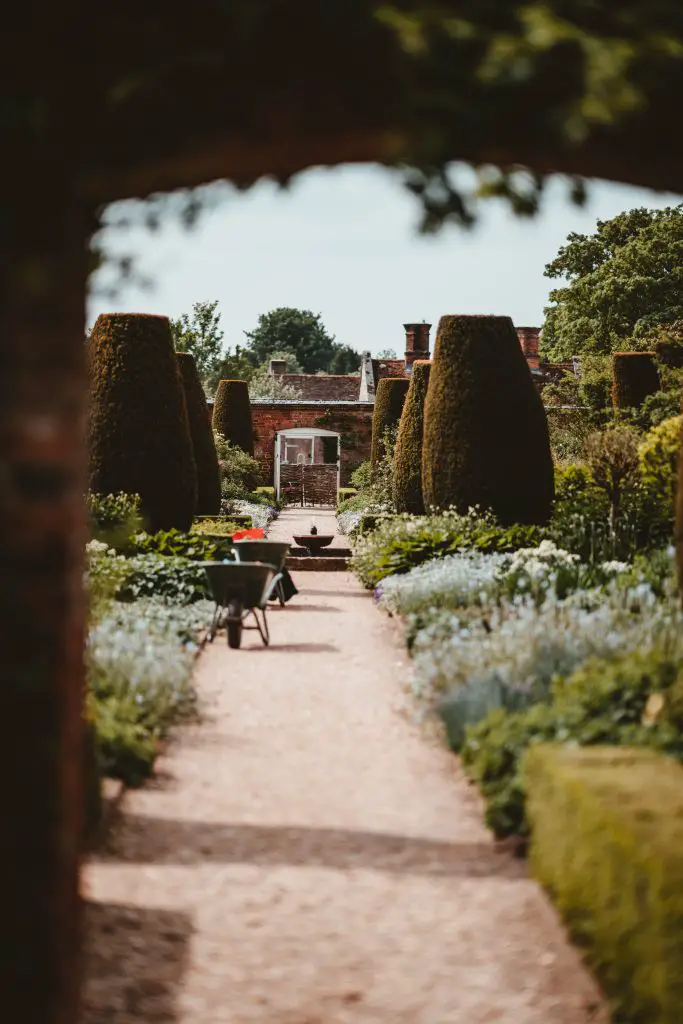
2. Create a Defined Structure
Within your garden it is best develop a defined structure that has clearly demarcated beds and paths. This defined will work well within a smaller space producing ascetically pleasing appearance. It is also helps to have a high degree of symmetry within the structure to create a sense of balance. The image below shows an example of symmetry within a confined space. The defined structure also helps to the garden to look good even when it is winter and garden is not at its best.
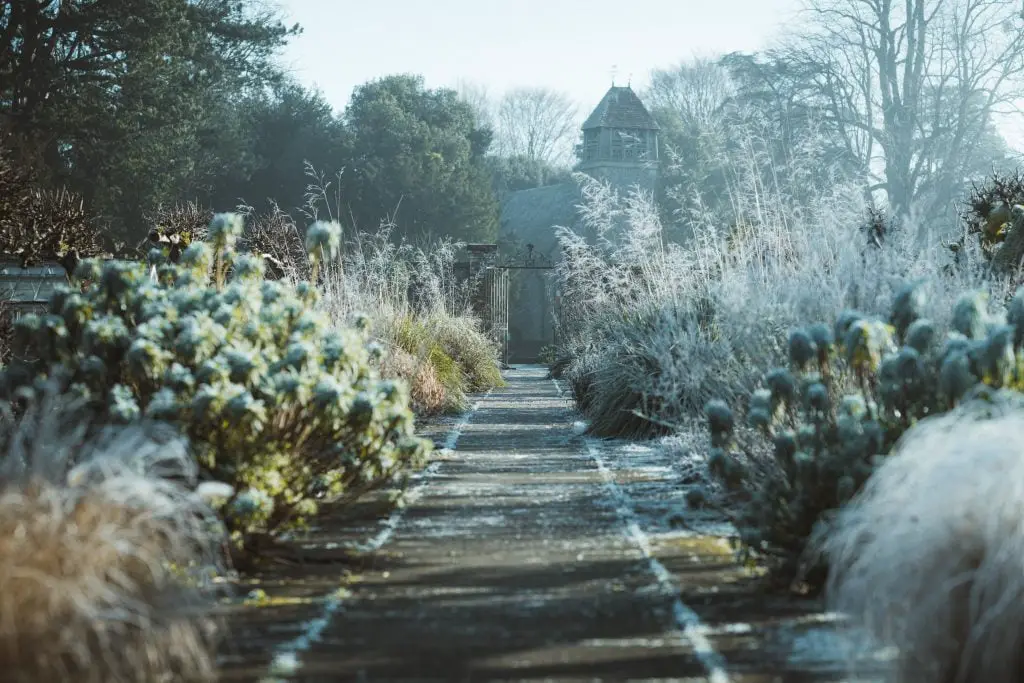
3. Maintain Edges and Paths
Maintaining neat and precise edges within your vegetable garden has a surprising large impact on the appearance of the garden. When talking about edges I am referring not only to the edges of a garden beds but also any trees or bushes that surround your vegetable garden or boarder the paths. Maintaining clean lines with respect to a path produces an aesthetic pleasing view for the eye.
An example of this is shown in the picture below.
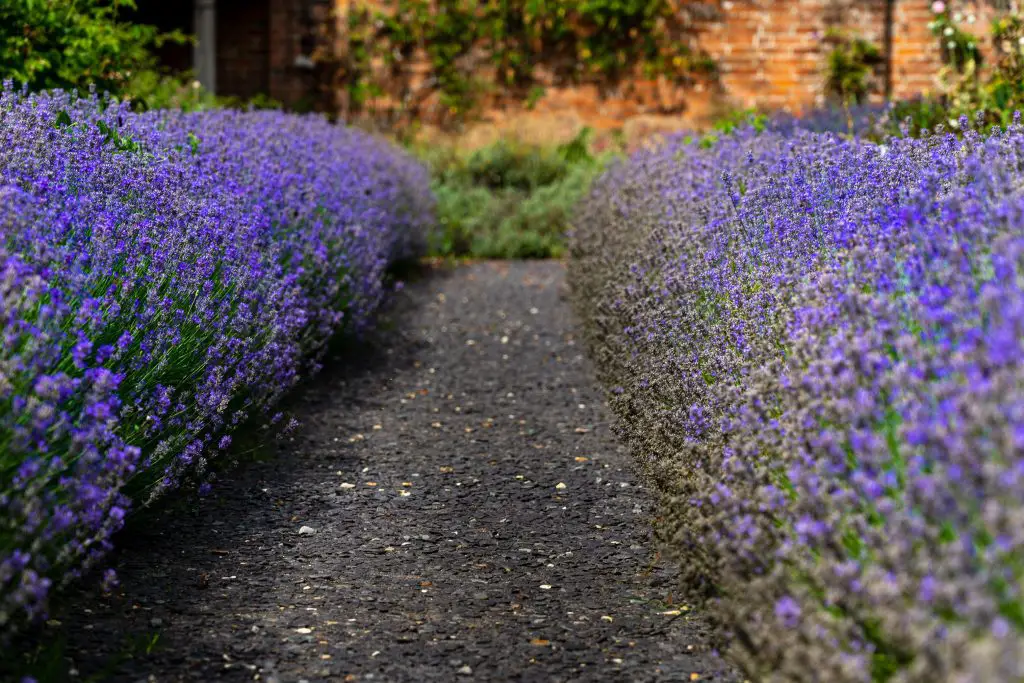
4. Covering Walls and Fences
When enclosing a space it is best to create uniform appearance for walls. This can be difficult in some cases because the boarders of a garden are often made of different materials and can include your house.
One option to help tie in different fencing materials is to paint them. When painting them it is best to use a dark colour, my personal preference is black. The dark colour really makes the green foliage of plants stand out against the background.
The other option is to hide the walls with plants, however, plants rarely cover the walls instantly, so even if this is the plan, painting would still be recommended.
When selecting plants, my personal view is to always use productive plants where practical. Many are as beautiful as any ornamental plants, however, the orientation of the structure may limit this as most productive plants require a reasonable amount of sun to fruit.
When selecting productive plants to cover the walls the options are climbers, deciduous trees or evergreen trees. If you are considering productive climbers most are deciduous, the exception to this is passion fruit which provides year round foliage. The passionfruit is the most vigorous fruiting vine and can become invasive if you are not careful. Plants can be purchased from Amazon.
Another option is a grape vine, which I personally think is a much more elegant plant because it has lush green foliage in spring. This foliage changes to a yellow leaf in Autumn revealing a lovely bark stems in winter. Grapes are relatively vigorous once the stems become established. An example of a grape in spring is show in the photograph below. There are several different grape vines available through yougarden.com.
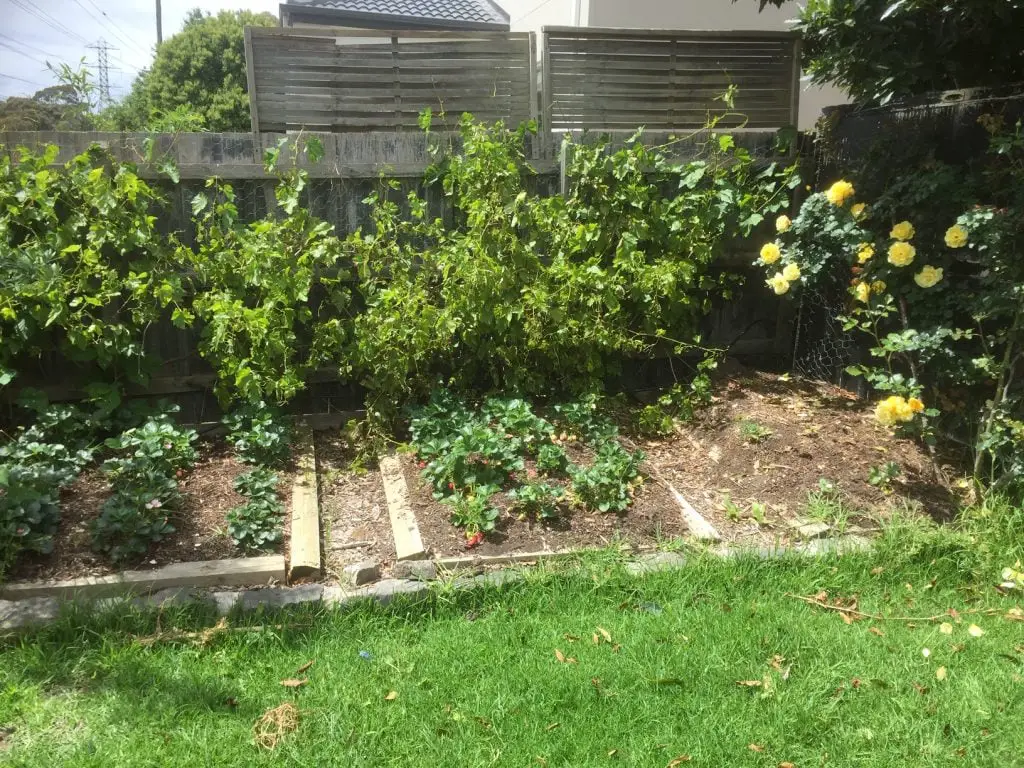
Other vigorous plant that are also be suitable is a Climbing Beans and Hops. Less vigorous options include summer fruiting Blackberries, Kiwi Fruit or Kiwi Berries.
The disadvantage of all these plants is that they require a support structure. The easiest solution for a support structure is using reo mesh as it is easy to erect, long lasting and rusts nicely to provide an beautiful aged appearance.
If you do not want to put a support structure the best 2 options are Virginian Creeper or Boston Ivy,. They are both plants are vigorous self supporting climbers that will cling to brick walls and fences and will tolerate shade and full sun. They produce thick green foliage that changes to a fiery red color in Autumn. Virginian Creeper and Boston Ivy are available in the UK through Thompson and Morgan and in the US they are available through Amazon.
The image below show a South facing fence at my house in spring that is in full shade for large portions of the year (I live in the Southern hemisphere). The fence was replaced around 5 years ago so all the growth you see is less than 5 years old.
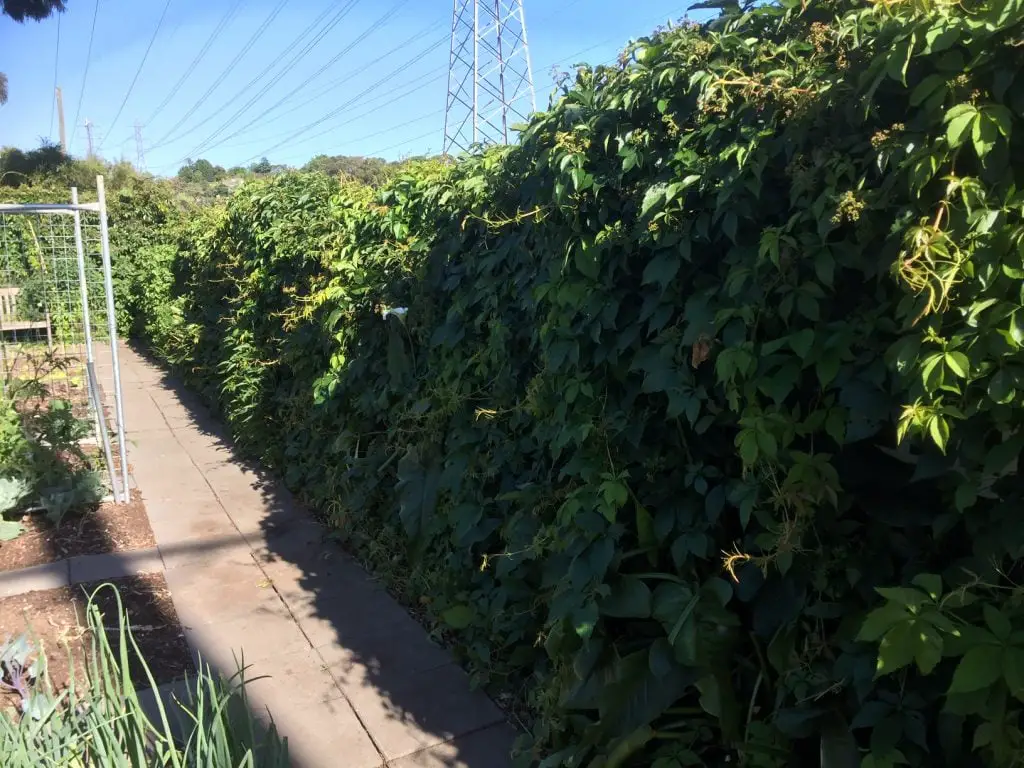
The other option is to use trees which can be hedged into structural blocks or left as informal tree. The traditional tree used is Yew Pivet or Box plants because as they are dense, evergreen and long lived. However, they are extremely slow growing. There are many other species that are fast growing may be used. The most suitable species to use will depend on your region. Bamboo is one example of a fast growing hedge that may be used. When trying to create a hedge it is best to plant trees approximately 60cm (2ft) apart
The final option is espalier trees against the walls which is discussed later in the article.
5. Use Uniform Spacing Between Plants
As mentioned earlier in the article the structure of the vegetable growing space and its beds plays a defining role in creating a beautiful space. However, within the beds themselves there is an opportunity to bring even greater order to your vegetable plot using equidistant planting (placing the plants equal distances apart in all direction).
Equidistance spacing is a method that has been used by market gardeners for generations to optimise that number of plants that can fit into a given space. However, this planting also create geometric space patterns that provide a sense of order and structure to the plant irrespective of the angle the planting is view from. An example of the planting structure can be seen in the photograph below.
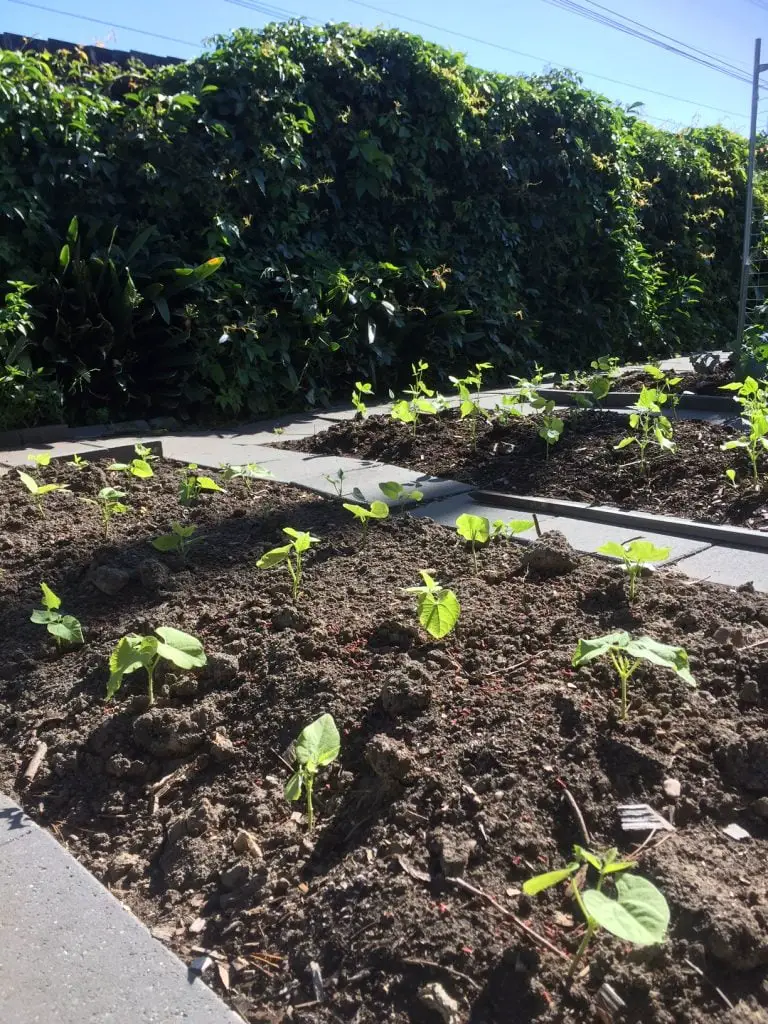
To create an equidistant spacing I find it is easiest to use a flat board, that is approximately 15cm (6 inches) wide. The width of 15cm is recommended because most plants are spaced at least 20cm (8 inches) apart allowing the board to be placed between rows. Additionally, it is wide enough to allow the gardener to walk on top of it which reduces the chances the soil being compacted.
For convenience the board is pre-marked at a spacing of 25cm, 30cm, 40cm and 50cm (8, 12, 16 and 20 inches). To create the equidistant spacing start by laying the board down on the ground to create the first row. Move along the board with a dibber creating holes next to the marks on the board.
To rotate the board to an angle of 60° from the first row with one of the markings on the board aligned next to one of the holes that has been created in the first row. The easiest way to approximate the angle is to line up the second marking on the board with the next hole in the first row. Once the board has been positioned correctly create the holes next to the markings on the board. Each one of these holes will provide a point of reference for creating the row that will run parallel to the first row created.
To create the rest of the pattern position the board, parallel to the first row next to each one of these newly created holes. Once the marking on the board is next to the hole create the remaining holes in the row. When this complete you should end up with a pattern like the picture below.
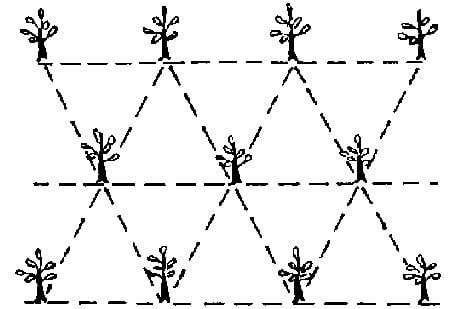
6. Hide Utility Areas
There will always be sections of your garden that are alittle unsightly. These are usually areas like compost heaps and clothes lines that are necessary to maintain the functionality of the garden or household. Therefore they can’t be removed but they can be hidden.
This is best by done using screening to hide the area with a fence or plants of some type. As discussed earlier in the article it is best to paint any fences put up or use plants with evergreen foliage.
7. Maintain A Weed Free Space
The appearance of weeds within your vegetable garden will detract significantly from the appearance of your garden, particularly if the weeds are at the edges of your growing spaces or in the paths, which as been mentioned earlier in the article. However, for many people with larger vegetable gardens finding enough time to weed is a perennial problem.
The best strategy I have found to reduce the general level of maintenance is to use a No Dig approach. I can tell you from first hand experience that moving to a No Dig gardens has reduced the time I spent weeding dramatically. This has increased the amount of time I spend on productive activities like planting and harvesting vegetables and allowed me to maintain my vegetable garden much more easily making it an all together more pleasurable experience.
To convert an existing garden to a no dig one is quite simple. Once a year place a thick layer of garden compost onto the surface of your beds, typical 5 to 10 cm (2 to 4 inches) is ideal. It is best to apply the layer in Autumn as it will smother the weeds for several months before any maintenance is required.
The additional advantages of a no dig garden is it negates the need to fertilise plants as the layer of compost contains all the things that a vegetable plant will need to grow. There is also no need to add mulch as the layer of compost also serves that purpose.
However, it is important to note that a no dig garden will reduce the weeds but it will not completely eliminate them. To maintain your garden on an ongoing basis it is best to remove any weeds as soon as they appear. This is easily done if equidistant spacing, mentioned in the article earlier, is used.
The reason for this is that it allows a dutch hoe to be used to remove weeds. Running a hoe between plants is quick and easy, it takes me less than 5 minutes to complete for a 4 metre square bed (43 sq. ft). This technique works best when the weeds are small. A dutch hoe can be purchased through Amazon. To learn more about no dig gardens click here.
To see a great of example of how this technique is used to maintain a beautiful garden watch the video below by Charles Dowding. Additionally, visit his website by clicking here for great tips on no dig gardening.
8. Add Espalier Trees To The Garden
A formal espalier tree will add a touch of elegance to any vegetable garden while maximising the output of your productive garden. For those that are unfamiliar with with espalier trees it is a technique that is used to maintain the tree in a two dimensional shape or flat plain. The technique minimises the space taken up by trees while optimising fruit production.
There are two types of espalier, formal and informal. Formal espalier trees have a defined branch structure that is maintained by bending the branches into specific symmetrical shapes. This provides a beautiful structural element to the garden. The most common is the T-shape which is shown in the picture below.
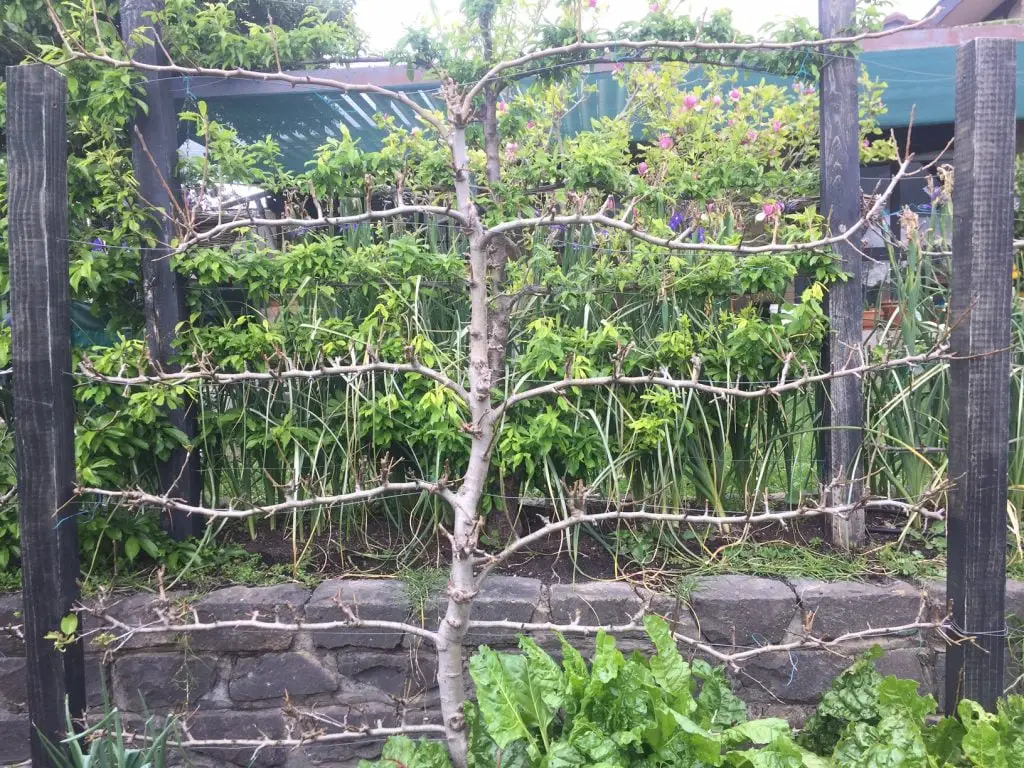
The formal espalier method is most suitable to apples, pears, cherries and plums. However, this technique is not suitable for all trees due to their growth habit. For trees such as lemons, limes and oranges it is not possible to produce a formal espalier. For these tree and informal espalier may be used. To learn more about how to create espalier trees click here.
As mentioned in earlier in the article espalier trees can be used to hide unsightly walls, however their use is not limited to growing against walls. They can also be used in the middle of gardens to provide structural elements. If you need to purchase fruit trees I would highly recommend visiting Thompson and Morgan’s website. They have a huge variety of Apple and Pear trees that are ideal for espaliering.
9. Remove Any Non Performing Plants
To maintain a beautiful aesthetic within garden you also need to be ruthless with any plants that are not performing. These may include vegetables that are going to seed or dying back. These plants serve no purpose from an aesthetic or productive point of view and should be removed immediately.
For plants such as Pumpkin and Zucchini which are highly productive but have a tendency in most years to attract powdery mildew on the leaves it is best to try and treat the leaves from early in the season. The most effective method, believe it or not, is to spray milk onto the leaves which will suppress the fungus.
For plants such of these, which are highly productive but start to a appear a bit “ratty” toward the end of the season there will always be a trade off between appearance and production. My personal view is production trumps appearance.
To maintain a full garden when plants need to be removed it is best to have large volumes of seedlings ready to go as it allows any new spaces to be quickly filled. It is also a good idea to plant many more seedlings than you need as it will allow you to be able pick the strongest seedlings and also replace them if they are destroyed by slugs and snails.
10. Incorporate Flowers
Lastly the incorporation of flowers into the vegetable plot also creates a beautiful dynamic to your garden. Additionally, the inclusion of flowers has a practical benefit as it encourages pollinators to visit the garden which will help to maximise production with fruiting plants.
However, the incorporation of flowers does not necessarily mean the inclusion of purely ornamental plants. Many of the fruiting trees such are apple, pears, plum and Apricots produce flowers that will add to the aesthetics of the garden.
In my garden I use things like lavenders and calendulas because the they have long flower periods and are often flower with other fruiting vegetables in the garden are not. A wide variety of Seeds are available from Seeds Now in the US and Thompson and Morgan in the UK.
